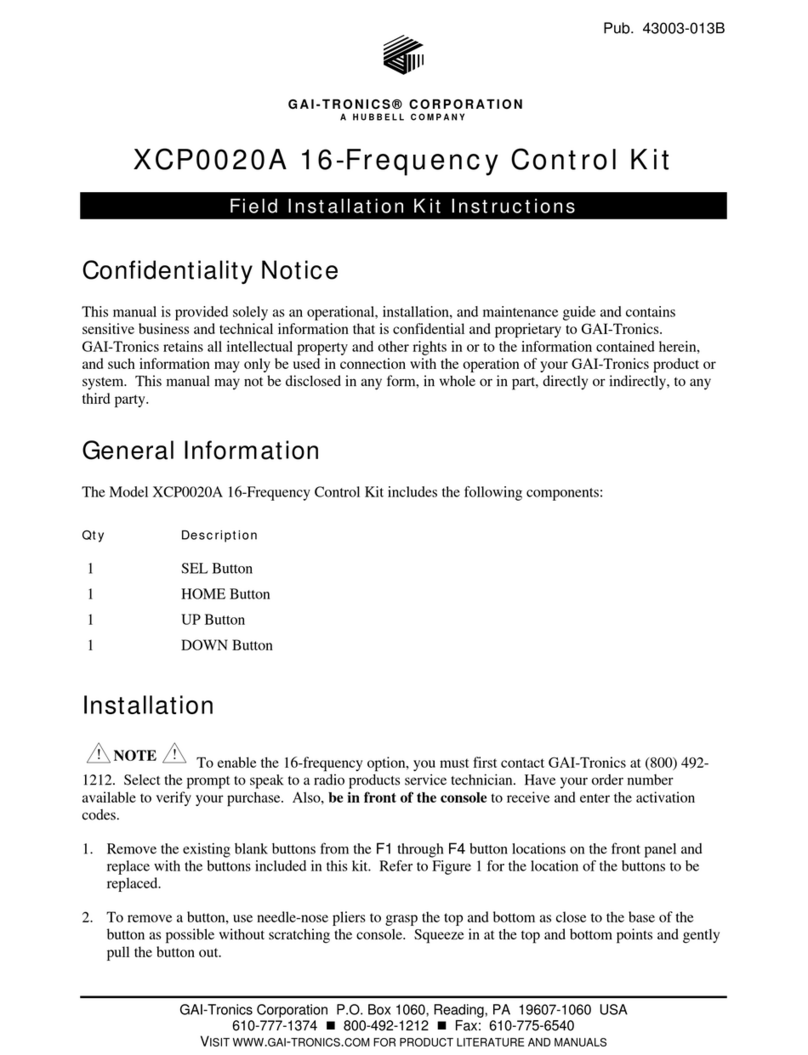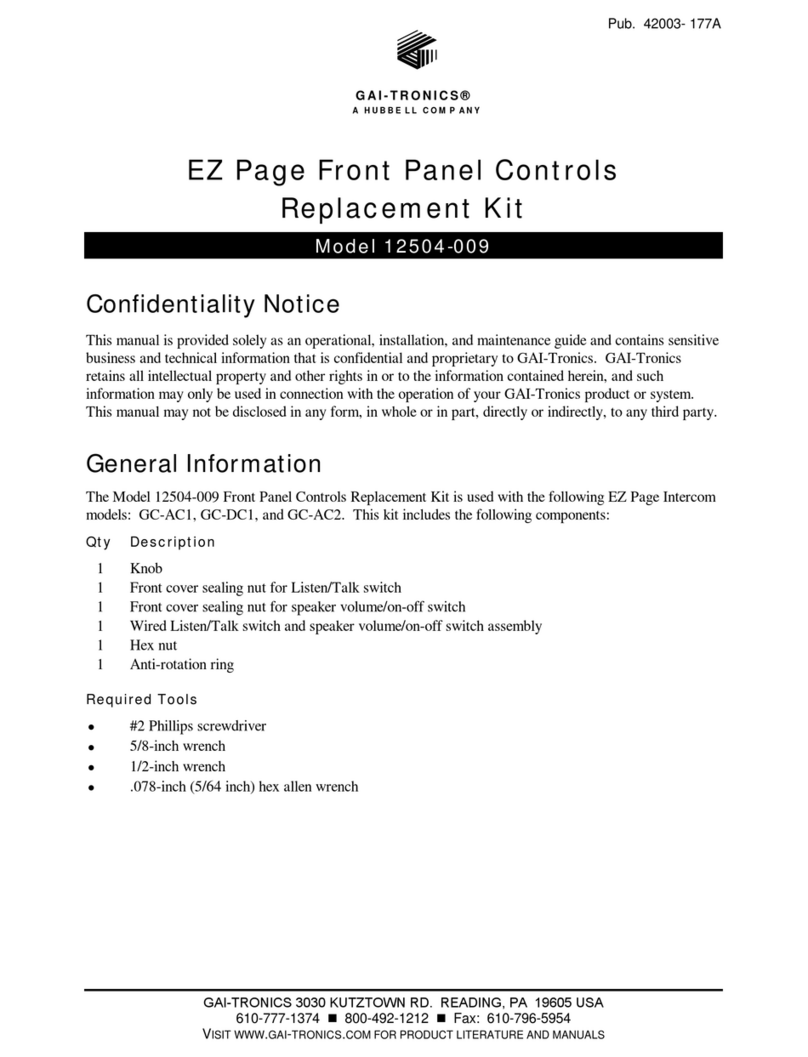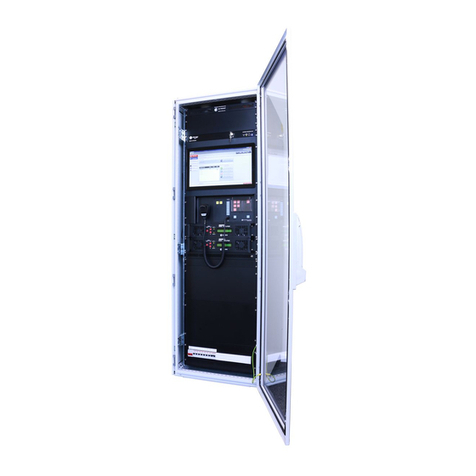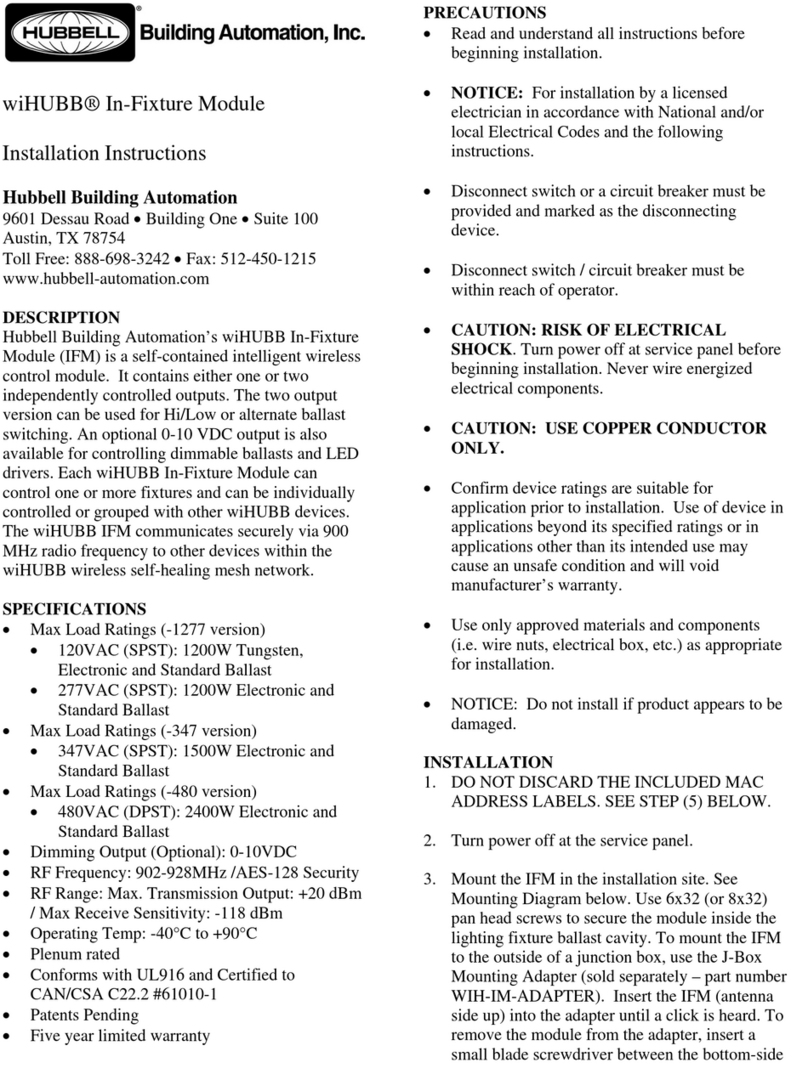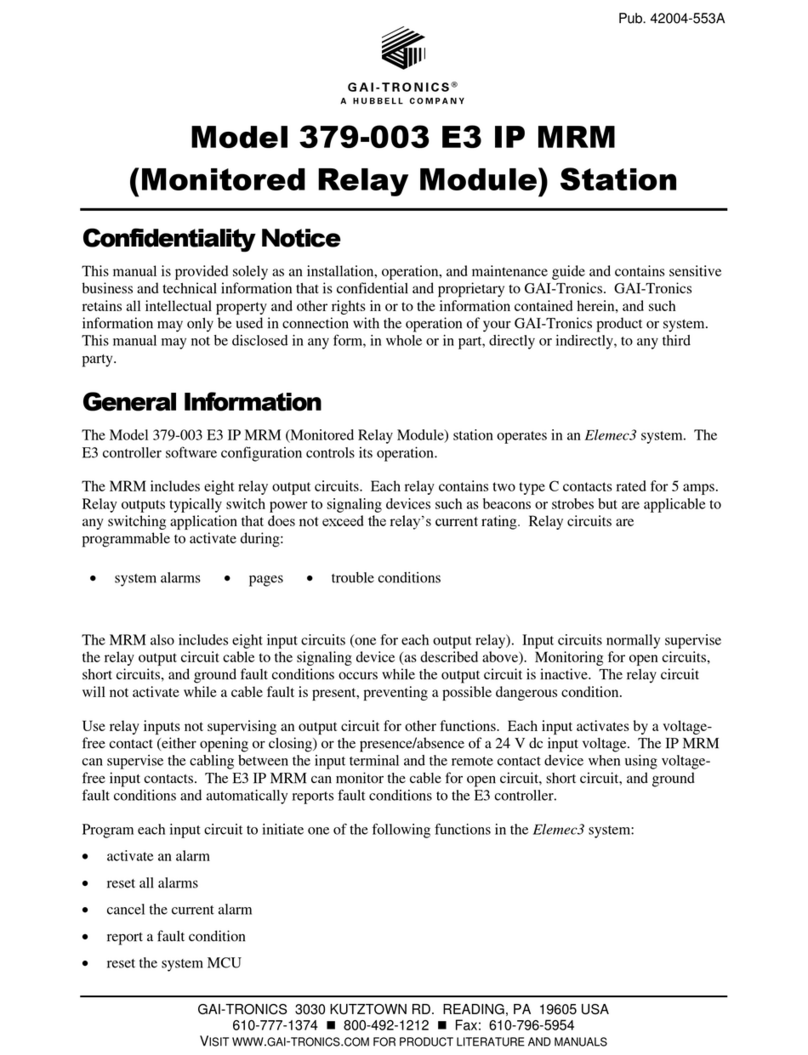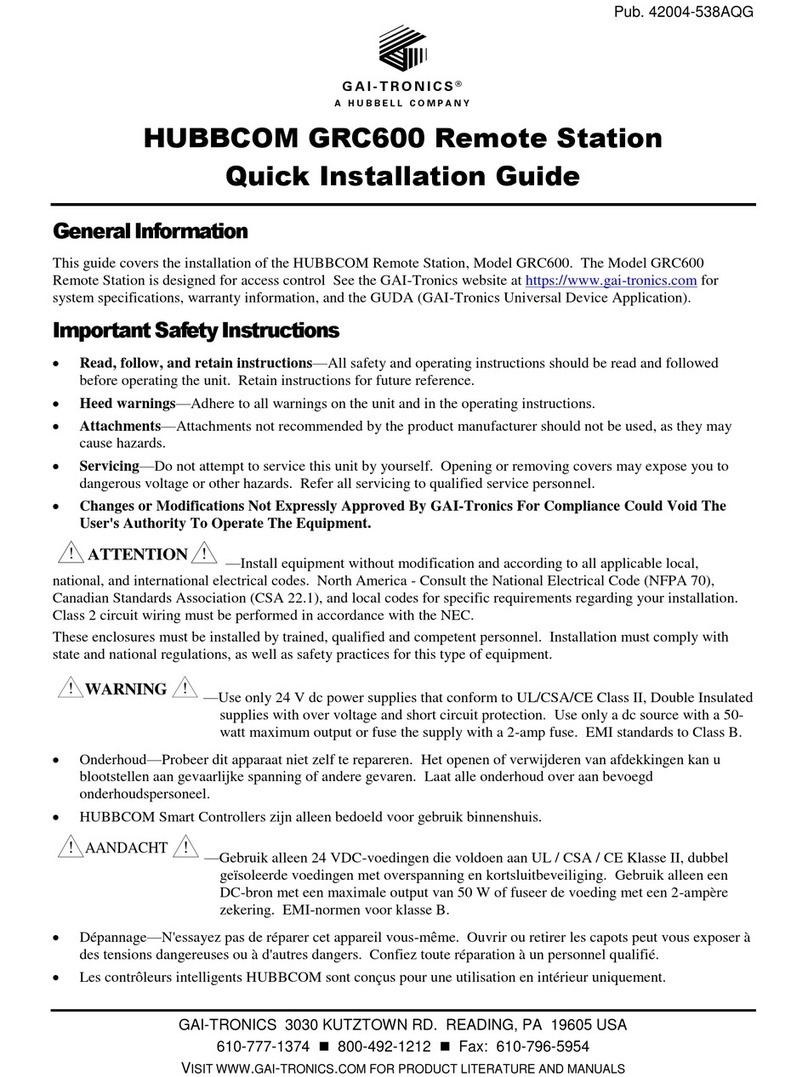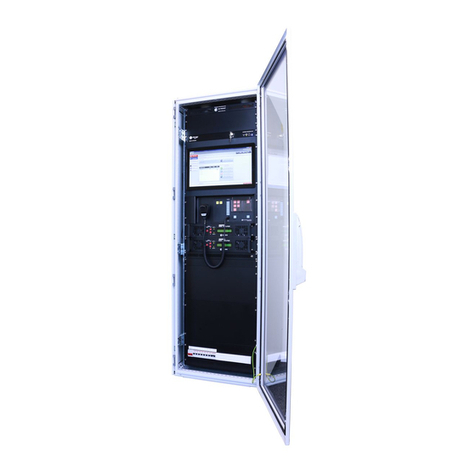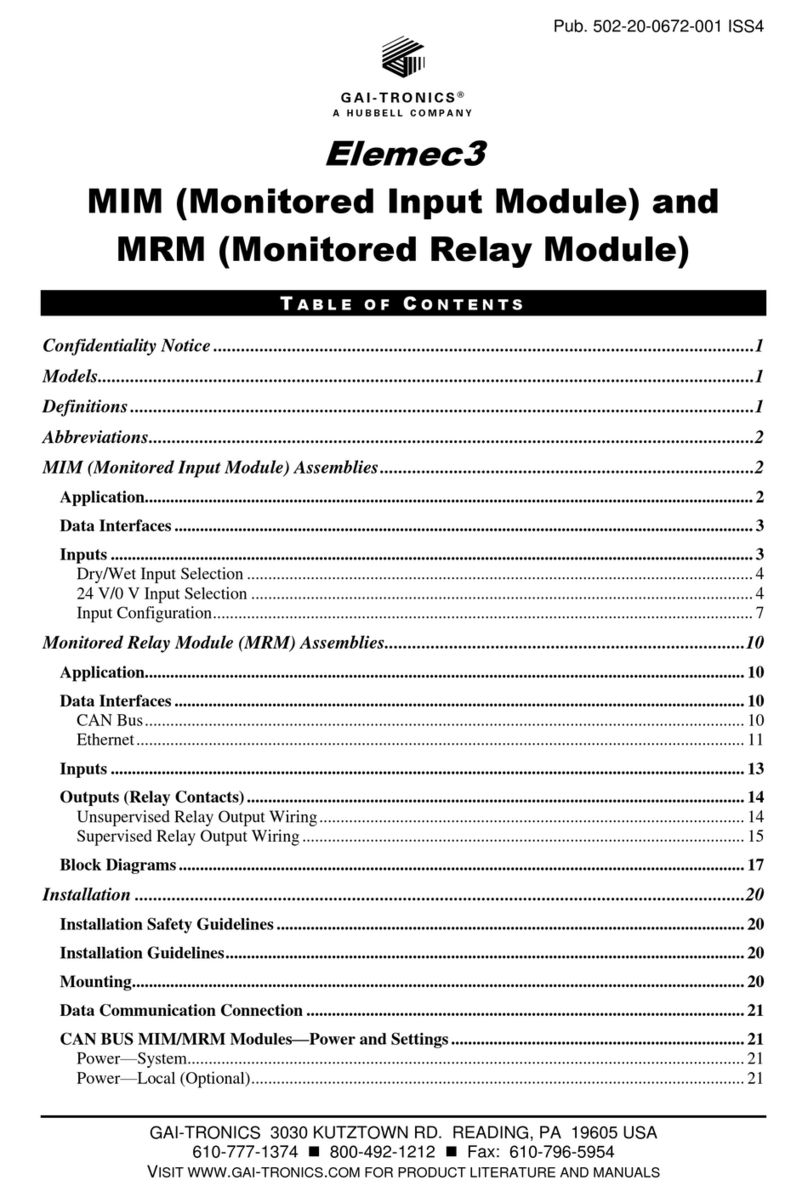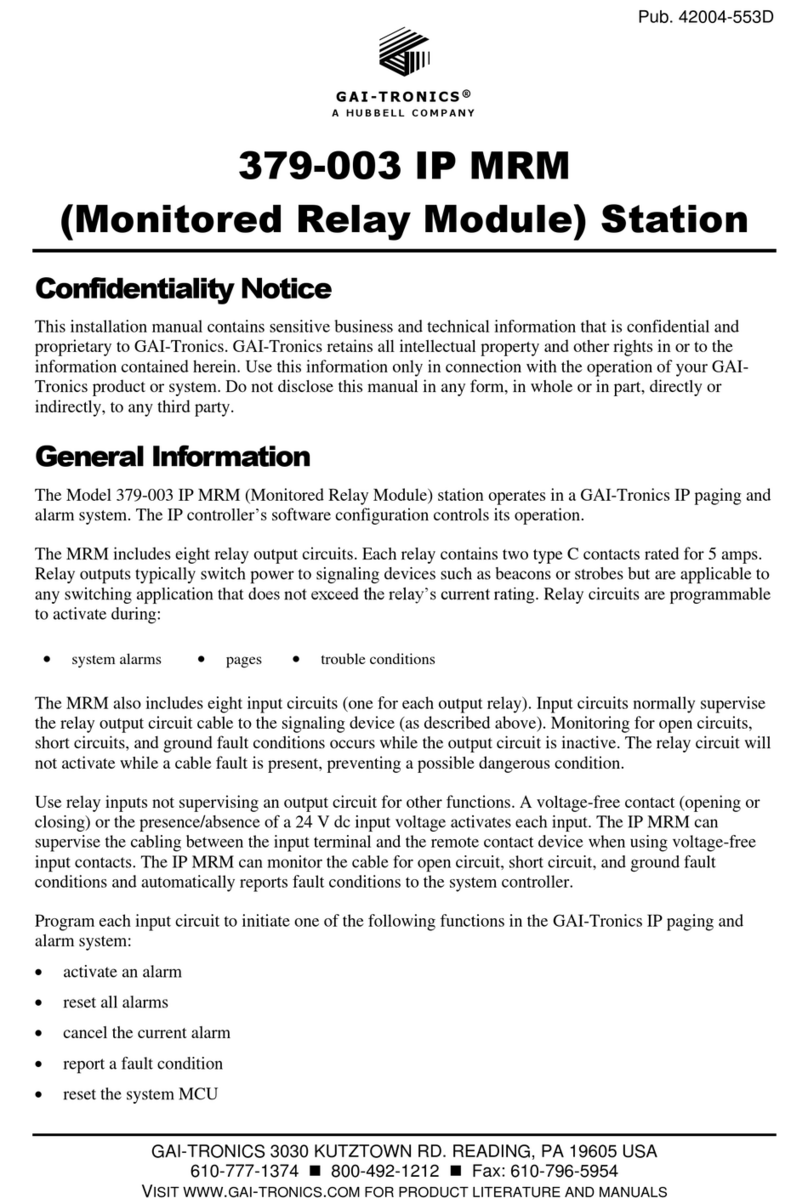
© 2016 Hubbell Control Solutions • www.hubbell-automation.com Page 3
4) Linking
Linking is the process by which different devices are congured
to work with each other in a system. Sometimes this process is
also called Teach-in or Learn-in.
The LED controller can work together with two types of devices:
▪Transmitters (switches and sensors) can provide input data
to the LED controller.
▪Transceivers (Gateways or controllers) can exchange data
and commands with the LED controller.
There are two basic types of devices in the system; transmitters
and transceivers:
Transmitters (Transmit-only)
Transmitters are energy-harvesting devices that send RF mes-
sages to communicate a condition, level, or state. The following
transmitter types can be linked to the LED controller:
▪Switches
▪Occupancy Sensor
▪Light Level Sensor (only in addition to switches and
occupancy sensors, not alone)
Transmitters can only be linked to transceivers, not to other
transmitters.
Transceivers (Transmit & Receive)
The LED controller is a transceiver. Transceivers are control-
ling devices that send as well as receive RF messages. They
also process relevant control logic, and actuate the appropriate
outputs (switching a light ON or OFF for example).
The LED controller can be linked to other transceivers if de-
sired. The following other transceiver types are supported:
▪Demand Response Controller
▪Central Controller
Linking to transmitters (sensors or switches)
To link the LED controller with a transmitter, the LED controller
must be powered, within wireless range of the transmitter it is to
be linked to, and set to linking mode to accept links.
Once these conditions are met, the desired transmitter is trig-
gered to send a special link message.
The LED Controller receives this link message and stores the
link parameters permanently so that the two devices can inter-
act to provide a variety of intelligent control options.
Link / unlink procedure
1. Shortly press the LRN (O) button to enter linking / unlinking
mode.
The LRN (O) LED starts toggling red / green indicating that
linking / unlinking mode is active. In addition, the connected
load will toggle between 10% and 90%.
Once activated, this mode stays temporary active to provide
time to link / unlink multiple devices. The mode will stop
after 30 seconds if no LRN (O) telegram is received.
2. For the transmitter to be linked, do one of the following
according to the type of device:
A. Sensor: click the designated link button.
B. Rocker Pad: click the “I” button (top button marked on
the switch plastic or “I” symbol on the back of the switch) 3
times quickly.
3. If the device has been linked successfully, the LRN (O) LED
will display solid green for 4 seconds. The LED controller is
now ready to accept new links.
NOTE: After a device is linked, additional learn telegrams
received in operating mode (not in linking / unlinking mode)
from that device will cause the connected load to toggle
once between 10% and 90%, if the EnableLinkChecker
parameter is set to ON.
This allows quickly checking the connection between this
device and the LED Controller.
4. For a linked transmitter to be unlinked, please use the same
action as described in point 2 above.
5. If the device has been unlinked successfully then the LRN
(O) LED will display solid red for 4 seconds and the load will
be switched to a dimming level of 10% for 4 seconds.
6. To exit linking / unlinking mode and return to normal opera-
tion, wait 30s without sending new LRN (O) telegrams, or
shortly press the LRN (O) button again.
Clear all linked transmitters
In order to clear all linked devices press and hold the LRN (O)
button for 10 seconds. After that the LRN (O) LED will display
solid red for 10 seconds.
Linking to Transceivers (gateways or controllers)
1. Set the other device into linking mode
2. Shortly press the LRN (O) button.
The LRN (O) LED starts toggling indicating that linking /
unlinking mode is active. The connected load will toggle
between 10% and 90%.
3. Shortly press the DIM (I) button. This will cause the LED
Controller to transmit a teach-in message identifying the
status message EEP used by it.
4. Shortly press the LRN (O) button again to return to normal
operation.
Setting the minimum output voltage level
It is possible to congure the minimum output voltage
(MinVoltageLevel) of the LED Controller via its button interface.
This level is typically set to avoid ickering and will be the mini-
mum level the load starts at when it is switched on. It will not be
possible to dim the output below this value.
Use the following steps to congure this minimum dimming
value:
wiSTAR™ Dimming Control Module • Installation Guide

